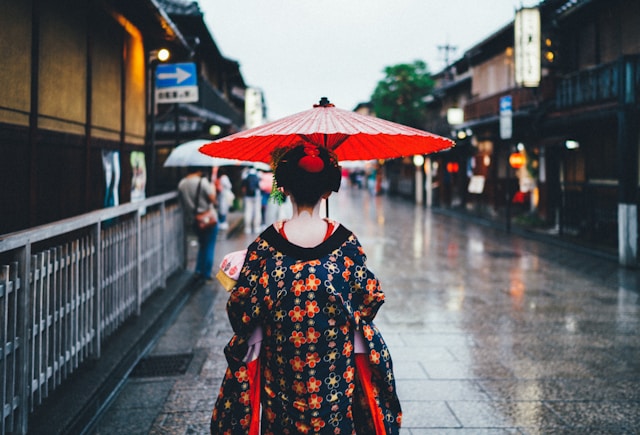
Taking a cultural tour of Japan is a journey through ancient traditions, exquisite art forms, breathtaking landscapes, and vibrant cityscapes. As one of the world’s most culturally rich destinations, Japan offers a blend of historical sites, stunning architecture, and deep-rooted customs. From the ancient temples of Kyoto to the bustling streets of Tokyo, a cultural tour of Japan promises travelers an immersive experience filled with history, beauty, and unforgettable moments.
In this guide, we’ll dive into the essentials of a cultural tour of Japan, covering everything from the country’s rich history to must-visit locations, cultural etiquette, and tips for making the most of your trip.
1. A Brief History of Japan’s Cultural Legacy
Japan’s culture has evolved over thousands of years, influenced by indigenous beliefs, interactions with China and Korea, and Western ideas introduced in the Meiji era. Each historical period has left a unique mark on Japan’s art, architecture, philosophy, and social customs.
- Ancient Japan: In early Japan, Shintoism was the dominant religion, emphasizing a strong connection to nature and reverence for ancestors. Many shrines and festivals in Japan still honor these beliefs.
- Heian Period (794-1185): Known as a golden age of Japanese culture, this period saw the flourishing of literature, art, and poetry. Kyoto, the imperial capital at the time, became a center of elegance and artistic development.
- Edo Period (1603-1868): This era was marked by peace and isolation. The Tokugawa shogunate ruled, fostering traditional arts such as kabuki, tea ceremonies, and the samurai code of ethics known as Bushido.
- Meiji Restoration (1868-1912): Japan opened its doors to the West, modernizing rapidly while striving to retain its unique cultural identity. The blend of East and West continues to define Japan’s modern culture today.
With this cultural background in mind, let’s explore some of the top experiences and tips for your cultural tour of Japan.
2. Why Take a Cultural Tour of Japan?
Japan is not just about the stunning cherry blossoms or the iconic Mount Fuji. A cultural tour of Japan offers travelers a deeper understanding of the country’s traditions, values, and history.
- Diverse Cultural Experiences: Japan’s culture is incredibly varied, from ancient Shinto rituals to contemporary pop culture. On a cultural tour of Japan, you can witness this diversity firsthand.
- Ancient Traditions in a Modern Setting: Japan seamlessly blends ancient traditions with cutting-edge technology and urban design, creating a unique cultural experience that’s unlike any other.
- Rich Artistic Heritage: From delicate woodblock prints to intricate kimono designs, Japanese art has a distinctive style. A cultural tour of Japan can introduce you to traditional and modern Japanese art forms, both in galleries and everyday life.
- Friendly and Polite Society: The Japanese people are known for their politeness and hospitality, making visitors feel welcomed and respected. Experiencing Japan’s renowned omotenashi, or spirit of hospitality, is an essential part of any cultural tour of Japan.
3. Top Cultural Sites to Visit on Your Cultural Tour of Japan
Here are some must-visit cultural sites to add to your itinerary when planning your cultural tour of Japan:
- Kyoto: Known as the cultural heart of Japan, Kyoto is home to over 1,600 temples, 400 shrines, and 17 UNESCO World Heritage Sites. Highlights include Kinkaku-ji (Golden Pavilion), Fushimi Inari Shrine, and the traditional Gion district.
- Tokyo: Japan’s bustling capital is a blend of tradition and modernity. Key cultural sites include Meiji Shrine, Senso-ji Temple in Asakusa, and the Imperial Palace.
- Nara: A former capital of Japan, Nara is famous for its ancient temples and friendly deer. Visit Todai-ji Temple, which houses the Great Buddha, and Kasuga Taisha Shrine with its thousands of stone lanterns.
- Hiroshima Peace Memorial Park: Dedicated to the victims of the atomic bombing, this park includes the Atomic Bomb Dome and the Peace Memorial Museum, reminding visitors of Japan’s commitment to peace.
- Osaka Castle: This iconic castle offers insight into Japan’s feudal history and is surrounded by beautiful cherry blossom gardens.
- Hokkaido: For those interested in indigenous Ainu culture, Hokkaido offers opportunities to learn about Japan’s indigenous people through museums and cultural performances.
- The Kiso Valley and Nakasendo Trail: Experience Japan’s Edo-era charm by walking a section of this ancient trade route, where old towns like Tsumago and Magome preserve traditional wooden buildings.
4. Unique Cultural Experiences to Enjoy in Japan
To truly appreciate Japan’s culture, immerse yourself in some of these traditional activities during your cultural tour of Japan:
- Tea Ceremony (Chanoyu): The Japanese tea ceremony is an art form that emphasizes harmony, respect, purity, and tranquility. Kyoto offers many authentic tea ceremony experiences where you can learn about the symbolism behind each step.
- Ikebana (Flower Arranging): This centuries-old practice of Japanese flower arranging emphasizes harmony, balance, and simplicity. Some cultural tour operators offer workshops where travellers can learn this meditative art.
- Kimono Wearing: Trying on a kimono is a popular experience in Japan. Many shops in Kyoto and Tokyo offer rentals, allowing you to dress in traditional attire and stroll through historic neighborhoods.
- Calligraphy (Shodo): Calligraphy is a revered art form in Japan. Participating in a calligraphy workshop can give you insight into the beauty of Japanese characters and the philosophy of simplicity.
- Sumo Wrestling: Watching a sumo match is a thrilling way to experience Japan’s national sport. The best time to catch a match is during the grand tournaments held in Tokyo, Osaka, Nagoya, and Fukuoka.
- Onsen (Hot Spring) Baths: Japan is known for its natural hot springs, and onsen bathing is an integral part of Japanese culture. Many onsen towns, like Hakone or Beppu, offer a chance to relax and enjoy traditional Japanese hospitality.
- Participate in a Matsuri (Festival): Japan has countless festivals throughout the year, celebrating everything from cherry blossoms to traditional folk performances. Festivals like Gion Matsuri in Kyoto or Nebuta Matsuri in Aomori showcase traditional dances, music, and costumes.
5. Essential Tips for Your Cultural Tour of Japan
To make the most of your cultural tour of Japan, keep these tips in mind:
- Learn Basic Etiquette: Japanese society values politeness, so it’s essential to know some basic etiquette. For instance, always take off your shoes when entering someone’s home or certain traditional accommodations. Bowing is also a common way to show respect.
- Respect Religious Sites: When visiting temples and shrines, be respectful. Avoid taking photos where it’s not allowed, speak quietly, and don’t touch objects or altars unless permitted.
- Use Chopsticks Properly: Using chopsticks is standard in Japan, and certain rules apply. Don’t stick chopsticks upright in rice (as it resembles a funeral offering), and avoid passing food from chopstick to chopstick.
- Try Japanese Phrases: Learning a few basic Japanese phrases like “arigatou” (thank you) and “sumimasen” (excuse me) can go a long way in showing respect and appreciation.
- Be Mindful of Space: In Japan’s busy cities, respecting personal space and keeping your voice low in public places is part of the culture.
- Bring Cash: While Japan is modern, many smaller shops, shrines, and restaurants may not accept credit cards. Bring enough cash, especially when traveling to rural areas.
6. Types of Cultural Tours in Japan
Japan offers a variety of cultural tours catering to different interests. Here are some of the most popular types:
- Historical Tours: These tours focus on ancient temples, castles, and heritage sites in cities like Kyoto and Nara.
- Food and Culinary Tours: Japanese cuisine is celebrated worldwide. A cultural food tour might include tasting sushi in Tokyo, trying ramen in Sapporo, and sampling sake in the breweries of Fushimi.
- Nature and Spirituality Tours: For those interested in Japan’s connection to nature, consider a tour of Shinto shrines, Mount Koya’s temple lodgings, or the sacred pilgrimage trails of Kumano Kodo.
- Anime and Pop Culture Tours: For fans of Japanese anime, manga, and pop culture, tours in Akihabara, Tokyo’s anime district, offer a deep dive into Japan’s vibrant modern culture.
- Traditional Art and Craft Tours: These tours focus on Japan’s traditional crafts, such as pottery in Mashiko, knife-making in Sakai, and woodblock printing in Asakusa.
7. Practical Information for Your Cultural Tour of Japan
To plan a smooth cultural tour of Japan, keep these practical details in mind:
- When to Visit: Spring (March-May) is ideal for cherry blossoms, while fall (September-November) offers stunning autumn foliage. Winter is great for onsen experiences, especially in places like Hokkaido.
- Accommodation: Staying in a ryokan (traditional inn) is a must. Ryokan offer a glimpse into Japanese hospitality, complete with tatami floors, futons, and kaiseki dining.
- Transportation: Japan’s railway system is efficient and convenient. The Japan Rail Pass is a cost-effective option for tourists traveling across the country.






